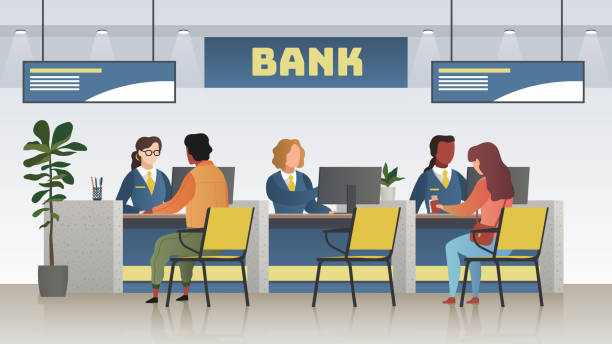As the world grapples with economic uncertainty, the real estate market stands as both a barometer and a catalyst for recovery. In the aftermath of significant downturns, such as the recent global recession, policymakers and economists alike have explored innovative strategies to stimulate economic growth. Among these strategies, down payment assistance programs have emerged as a crucial tool in revitalizing housing markets and bolstering overall economic health. This blog delves into the multifaceted role of down payment assistance programs in fostering economic resurgence, examining their impact on individuals, communities, and the broader economy.
Bridging the Divide: Overcoming Barriers to Homeownership
One of the primary barriers to homeownership is the formidable hurdle of accumulating a down payment. For many prospective buyers, especially first-time homebuyers and marginalized communities, saving a substantial sum for a down payment remains a daunting task. Down payment assistance programs serve as a bridge across this chasm, offering financial support to individuals who may otherwise struggle to enter the housing market. By reducing the upfront costs associated with purchasing a home, these programs make homeownership more accessible and equitable, empowering a broader segment of the population to achieve the American dream.
Stimulating Demand and Revitalizing Markets
In addition to facilitating individual homeownership, down payment assistance programs play a pivotal role in stimulating demand within the housing market. By providing prospective buyers with the means to secure financing, these programs amplify purchasing power and incentivize investment in real estate. As demand increases, so too does market activity, leading to a ripple effect of economic benefits. Rising home sales not only bolster property values but also spur growth in related industries, such as construction, renovation, and home furnishings. Furthermore, a vibrant housing market attracts new residents and businesses, injecting vitality into local communities and driving broader economic expansion.
Mitigating Risk and Fostering Stability
The aftermath of the 2008 financial crisis underscored the interconnectedness of the housing market with broader economic stability. The collapse of the housing bubble sent shockwaves throughout the global economy, precipitating widespread foreclosures, financial turmoil, and recessionary pressures. In this context, down payment assistance programs assume a critical role in mitigating systemic risk and fortifying the resilience of the housing sector. By ensuring that homebuyers have a vested interest in their properties from the outset, these programs reduce the likelihood of default and foreclosure, thereby safeguarding both individual households and the financial institutions that underpin the mortgage market. In essence, by promoting responsible homeownership, down payment assistance programs contribute to the overall stability of the economy.
Promoting Wealth Accumulation and Financial Security
Beyond the immediate benefits of homeownership, down payment assistance programs play a pivotal role in promoting long-term financial stability and wealth accumulation. For many individuals and families, homeownership represents a cornerstone of wealth-building, offering a pathway to asset appreciation and equity accumulation over time. By facilitating access to homeownership through down payment assistance, these programs enable households to participate in the wealth-building opportunities afforded by real estate ownership. As home values appreciate and mortgage balances are paid down, homeowners accrue equity, which can serve as a source of financial security and stability, providing a cushion against economic downturns and unforeseen expenses. Moreover, the intergenerational transfer of wealth facilitated by homeownership can have profound implications for breaking cycles of poverty and promoting economic mobility within families and communities.
Fostering Neighborhood Stabilization and Community Development
The impact of down payment assistance programs extends beyond individual homeowners to encompass entire neighborhoods and communities. By facilitating homeownership among low- and moderate-income families, these programs contribute to the stabilization and revitalization of neighborhoods that may otherwise be susceptible to blight, disinvestment, and decline. Homeownership fosters a sense of pride and belonging within communities, encouraging residents to invest in their properties and participate actively in local affairs. As homeownership rates rise and properties are maintained, neighborhoods become more attractive places to live, work, and raise families, thereby spurring further investment and development. Moreover, the stability and cohesion fostered by homeownership can have ripple effects across various social indicators, including education, health, and civic engagement, creating a virtuous cycle of community development and empowerment.
Leveraging Public-Private Partnerships for Maximum Impact
The success of down payment assistance programs hinges on effective collaboration between public and private sector stakeholders. Government agencies, nonprofit organizations, financial institutions, and community-based organizations all play essential roles in designing, implementing, and administering these programs. Public funding, such as grants, subsidies, or tax incentives, may provide the initial capital necessary to establish down payment assistance initiatives. Meanwhile, private sector partners, including mortgage lenders, real estate professionals, and philanthropic organizations, contribute expertise, resources, and infrastructure to facilitate program delivery and outreach. By harnessing the strengths and resources of both sectors, down payment assistance programs can maximize their impact and reach a broader spectrum of prospective homebuyers, ensuring that the benefits of homeownership are accessible to all.
Conclusion
In an era defined by economic volatility and uncertainty, down payment assistance programs emerge as beacons of hope and opportunity, offering a pathway to economic empowerment and stability for individuals, communities, and the broader society, with assistance from the best mortgage lenders in Florida. By bridging the gap to homeownership, stimulating demand, mitigating risk, promoting wealth accumulation, fostering community development, and leveraging public-private partnerships, these programs exemplify the transformative potential of targeted interventions in advancing economic recovery and resilience.
As we navigate the complexities of a rapidly evolving global landscape, the imperative to prioritize inclusive and sustainable strategies for housing and economic development has never been more pressing. By recognizing the vital role of down payment assistance programs and committing to their continued support and enhancement, we can build a future where homeownership is not just a dream but a tangible reality for all. In doing so, we lay the foundation for a more equitable, prosperous, and resilient society for generations to come.



















